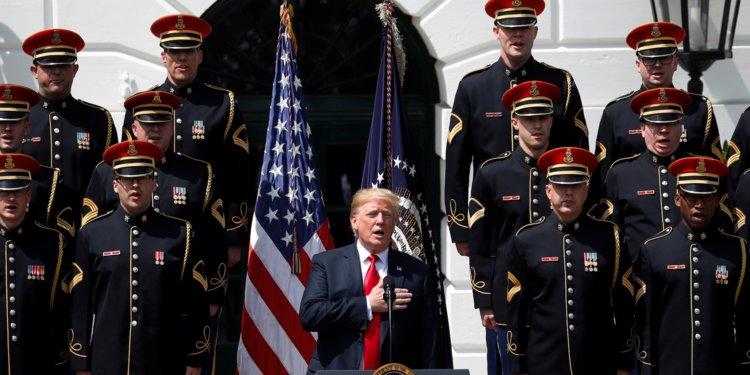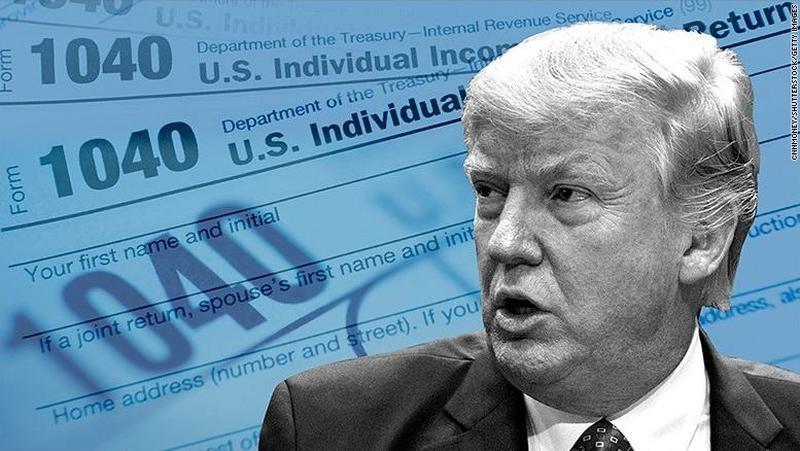Authored by Robert Wenzel via TargetLiberty.com,
How twisted has history gotten?
Independence Day (the Fourth of July) has traditionally commemorated the Declaration of Independence of the United States on July 4, 1776.
The Continental Congress declared that the thirteen American colonies were no longer subject (and subordinate) to the “First” British Empire and were now united, free, and independent states.
Now, apparently, the holiday will be used to put on display the killing machines of the United States.
President Trump said Monday that a display of U.S. military tanks will be part of a special event he is having created for July 4th.
“We’re going to have some tanks stationed outside,” Trump said Monday from the Oval Office.
“You’ve got to be pretty careful with the tanks because the roads have a tendency not to like to carry heavy tanks,” he said. “So we have to put them in certain areas, but we have the brand new Sherman tanks and we have the brand new Abrams tanks.”
(AP notes, that the information challenged Trump has the facts of the military he commands a bit distorted. Sherman tanks were the tank most widely used by the U.S. during World War II, but they have been out of service for decades. The M1A1 Abrams tank is currently the main U.S. battle tank killing machine.)
There will also be a flight of Air Force One over Washington D.C. and a performance by the Navy’s Blue Angels jets, reports The New York Times.
Big 4th of July in D.C. “Salute to America.” The Pentagon & our great Military Leaders are thrilled to be doing this & showing to the American people, among other things, the strongest and most advanced Military anywhere in the World. Incredible Flyovers & biggest ever Fireworks!
— Donald J. Trump (@realDonaldTrump) July 2, 2019
It is not expected that any killings of innocent populous by special forces will be displayed.
Trump, who is to speak at the celebration, has requested that the chiefs for the Army, Navy, Air Force and Marines stand next to him as aircraft from each of their services fly overhead and their respective hymns play on loudspeakers.
“It’ll be like no other — it’ll be special, and I hope a lot of people come,”. Trump told reporters. “We have some incredible equipment, military equipment, on display — brand-new. And we’re very proud of it.”
Trump is scheduled to deliver his Fourth of July speech from the steps of the Lincoln Memorial, becoming the first president in decades to participate in the annual Independence Day event.
But the Declaration of Independence did not cheer the military might of government, it concerned itself with calling for the overturn of governments that were limiting individuals.
Some snippets:
We hold these truths to be self-evident, that all men are created equal, that they are endowed by their Creator with certain unalienable Rights, that among these are Life, Liberty and the pursuit of Happiness. — That to secure these rights, Governments are instituted among Men, deriving their just powers from the consent of the governed, — That whenever any Form of Government becomes destructive of these ends, it is the Right of the People to alter or to abolish it, and to institute new Government, laying its foundation on such principles and organizing its powers in such form, as to them shall seem most likely to effect their Safety and Happiness…
…
Prudence, indeed, will dictate that Governments long established should not be changed for light and transient causes; and accordingly all experience hath shewn that mankind are more disposed to suffer, while evils are sufferable than to right themselves by abolishing the forms to which they are accustomed. But when a long train of abuses and usurpations, pursuing invariably the same Object evinces a design to reduce them under absolute Despotism, it is their right, it is their duty, to throw off such Government, and to provide new Guards for their future security.
If Trump wanted to act within the spirit of the Declaration of Independence, he wouldn’t haul out evidence of the US killing machine. He would call troops home on the Fourth of July from posts around the world. He would in the spirit of the Declaration leave people independent around the globe to find their own way.
And on the domestic front, he would close down some of the most oppressive government agencies such as the Drug Enforcement Agency, the National Security Agency, the Transportation Security Administration and the Federal Reserve Bank.
Now that would set off fireworks I would like to see.
via ZeroHedge News https://ift.tt/2NtaVEw Tyler Durden





